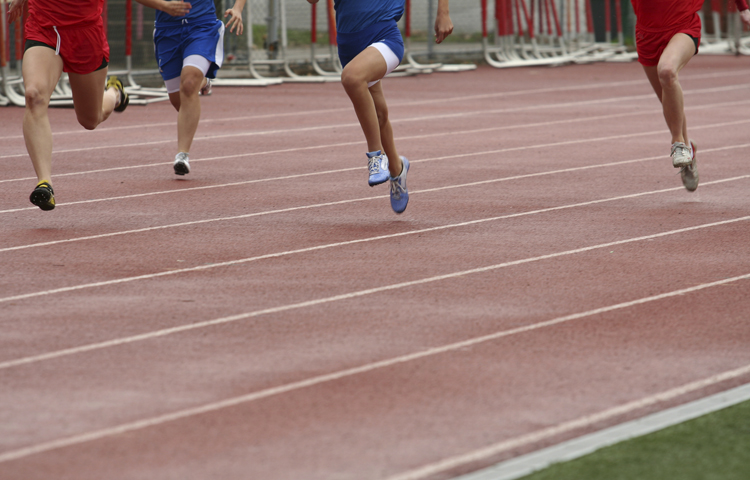
Strides are an excellent training tool and certainly something I try and get all runners doing. To do that, you need to understand what is being asked of you when you are doing strides.
Strides can help with: recovery; maintenance; running form; warming up; evolving a workout.
What are strides?
Strides are done over 100 – 150m at fast speeds with plenty of recovery. The pace you are aiming for will vary, but for most runners 5K and a bit quicker is the sort of top speed you are looking for.
The idea is you accelerate over 25 – 30 metres. Then hold that top speed for 50 – 80 metres, before slowly decelerating over the last 25 – 30 metres.
You want to be light on your feet, running relaxed and moving fast!
A walk back to the start (100 – 150m) is usually an appropriate recovery, but you might want a bit more, and that is OK.
Ease into the strides, it might be you only reach 10K pace for the first one. You’ll want to do three to five of them, but you can do as little as one. They are a very personal thing, and you’ll know when you are done.
Recovery
Strides are a great recovery tool that can help put that ‘pop’ into your legs. By running fast, we are ‘stiffening’ the muscles a bit and next day they should feel great.
Strides are useful here at the end of a recovery run / easy run, when you know you have a tough workout or race the next day. You’ll probably only need two to three sets of strides for this.
Maintenance
There are times in training when you are just grinding out miles, everything is very aerobic and it can feel like you haven’t run fast in ages!
Strides are really great to pop in at the end of a workout, just to remind you of what it is like to run at speed. Four to five is usually a good number of strides, but it could increase to seven to eight if you want.
Running Form
If you are working on something as part of your running form, perhaps landing that front foot underneath a bent knee, then doing a set of strides where you focus on just that can be really beneficial. These sorts of strides you to do when fresh (so the start of the workout) and then at the end, to allow you to see what your form is like when fatigued.
Having someone watch you do these or a video recording can be really helpful, to give you an idea if the changes you are making are working. F
our is a good number of strides to do, you might even do four at the start of the workout and two to three at the end.
Warming Up
Getting warmed up before a workout is really important, it wakes up your energy systems and prepares the muscles for the work to come. A series of strides, slowly increasing your speed to that of the workout and a bit faster can be really helpful in preparing your body and mind for the work to come. They can be great before a race.
The amount of strides you do here is really personal, you might be ready after 1 set of strides, but on another day it might take four to five to get ready.
Evolving a workout
Take a workout to next level by adding some strides in. After a strength and conditioning workout, a few strides can really finish the workout off well.
Some runners will put a set of strides in after a long run, running fast on fatigued legs can prepare you for a kick in your next race and help with Fast Twitch Muscle Fiber recruitment. Make sure your only semi-fatigued when doing them, so that you are still running with good form.
You won’t want too many here, three to four should be plenty. It depends on how fatigued you are going into them.
Strides are incredibly versatile and a weapon that should be in any runners training armoury. Make sure you are doing them for a specific reason, that way you can judge when you’ve done enough.
Happy striding!






